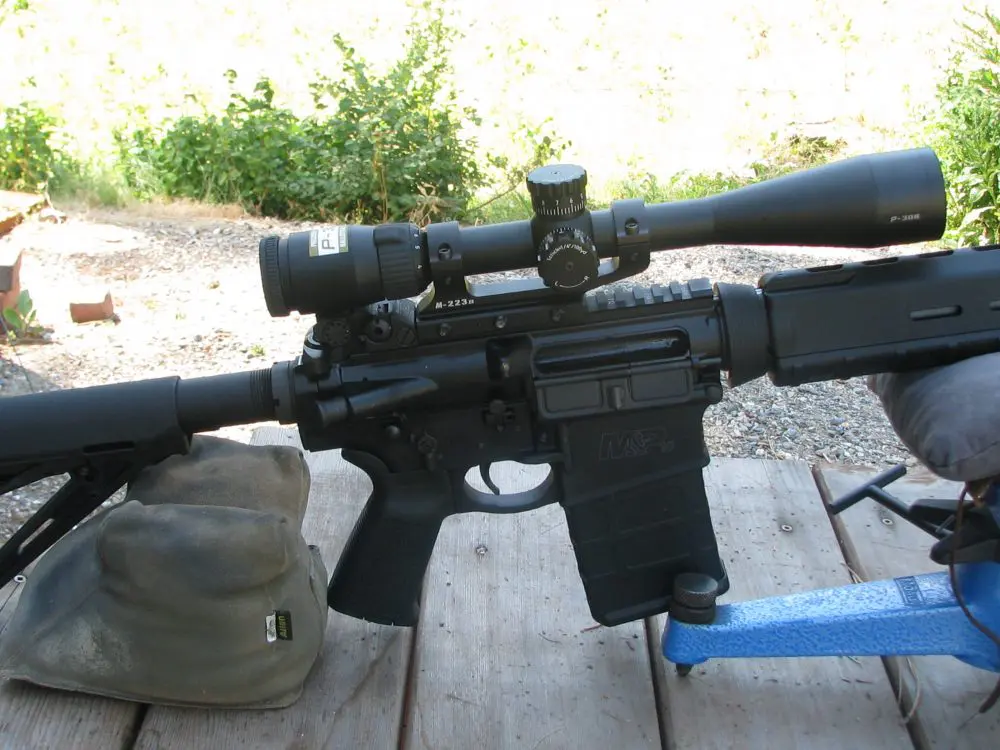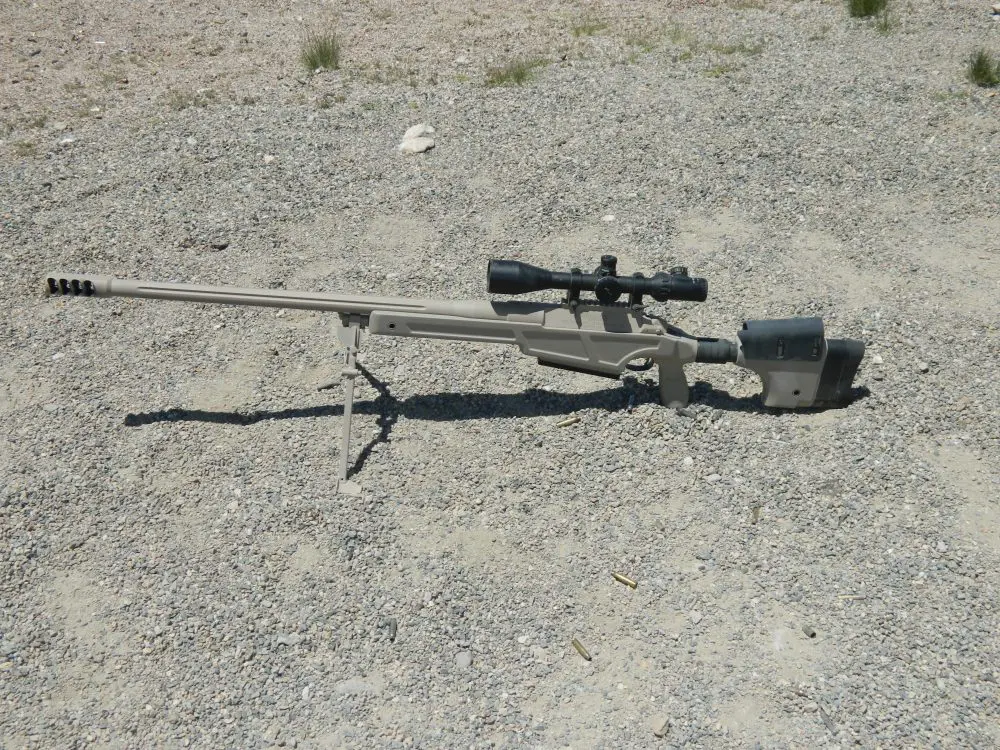I’ve had a few things happen the last few years that made me feel old age coming on. Settling down and getting married was one; the birth of my son was another. Neither, however, made me feel as old as asking several of my SWAT guys what, if any, training they have completed with the Heckler & Koch MP5. They looked at me like, well, you can imagine how they looked. You see, when I was coming up, the MP5 was the weapon by which all other things tactical were judged. Cops these days, my team included, are running the M4.
The sub-gun is a debatable topic, but I personally feel it remains a viable system and still has a place in our arsenal. I had several MP5s that needed to be on the street and several new guys who needed them. I wanted to put the officers through the paces with the sub-gun but wanted to get continuing education units (CEU) for them also.
Make sure you can shoot from any position you might find yourself in. Here an officer is in the process of “fighting” to the standing position.
CEUs are training hours that certified law enforcement officers in Alabama have to complete each year to keep their certification current. To do this I needed an in-depth lesson plan, written test and documentation that the Chief could see, approve and sign off on. The first part was fairly easy to accomplish. I sat down at the computer and started banging out a Power Point presentation.
The first thing I do is write out on paper what I want to cover and then I create slides detailing that information. I also include pictures and short video clips to add color and keep the students’ attention. Let me stress again that this is not difficult to do and it does wonders for your lectures.
I then take the Power Point presentation and print it off in color, placing three slides per page. This cuts down on ink and leaves plenty of room for notes. I then create a written test that covers every aspect of the Power Point presentation.
Officer on right is getting proper sight picture to ensure good hits.
For departmental and documentation purposes, I usually have a minimum of 25 questions and not more than 50, depending on the subject being covered. For this class I have 35 fill in the blank questions. The reason for the fill in the blank is that these guys are assigned to the tactical unit and I expect them to be a cut above. I also want to ensure that they know the material thoroughly before we take to the range.
I then package all this neatly in a notebook and give it to the Chief. Here’s the thing—if it looks good, covers all the applicable material and has a test attached to it that he can’t pass, we’re in business. He keeps his copy for records and to justify signing off on continuing education units for the guys.
After a few days I get the thumbs up I’m looking for from the Chief and schedule range dates. I end up with five guys in the training class and allot 1,000 rounds of ammo for each. I also have about 400 rounds each for secondary weapons.
Make sure you can hit the target no matter what the circumstances.
These guys have already been through intense training with all their other assigned gear, so I expect them to hit the range running because they already know how, where and when to transition to their secondary. We get to the range and go over the second safety brief of the day, the first being at the beginning of the Power Point presentation. The guys kit up in full gear and we’re on the well-manicured lawn of the one-way gun range.
The first few drills we run are to establish a zero. We start at the three-yard line and move back to the 5, 7, 10, 15, 25 and 50. I look at the groups from each distance and see even from the three-yard line that everyone seems to be zeroed. I like this drill because I can see up close if the weapon is “on.” As we move back, if the groups start opening up a lot, I know I have a shooter problem and can address it right away. I find that with the average shooter, by the time you finish at the 50, you’ve found their problem and have been able to correct it.
I have the guys doing magazine changes right away. We keep all of our weapons manipulations as close to the same mechanics as possible, and these guys are already squared away with the M4 system, so I don’t see many problems as the guys catch right on with the MP5. We had also conducted a few dry runs while covering the Power Point presentation, and that seems to help in any class. We then get into more drills that require transitions, magazine changes and malfunction drills.
Advancing on the threat.
As I’ve stated earlier, we keep everything as similar as possible with every weapon system we use. The malfunction drills require the shooter to push/pull on the magazine to ensure it’s seated properly and then run the cocking lever to ensure there is a good round in the chamber. If that doesn’t work, then it’s on to the non-diagnostic approach, which is, lock the cocking lever to the rear, strip the magazine out, run the cocking lever several times to clear any obstruction, replace the magazine, chamber a round and continue taking care of business. This is the same technique we use with the pistol and M4. We continue with drills that consist of moving and shooting as well as cover drills.

By now it’s dark and we begin low-light drills. All of our weapon systems have dedicated SureFire lights attached to them. I subscribe to the rule that all fighting guns, especially long guns, should be equipped with a dedicated white light and the shooter should know when and how to use the light properly. But I have a very close friend named Murphy who has taught me to keep my skill level up with handheld light techniques. Murphy has been my partner for the last 17 years and I long ago accepted his determination to ride beside me. I don’t fight him but I do prepare for whatever surprises he has in store. After a few drills using the SureFire forends, we move to handheld lighting techniques so we will be prepared when Murphy breaks the weapon-mounted light.
Again, these are basically the same techniques we use with the pistol, M4 and shotgun. I haven’t mentioned that the weather in Alabama this time of year gets fairly cold. Since it’s around 15 degrees with a single digit wind chill, we keep the drills fairly short. For the tactical team guys, I look at the Farmers Almanac and try to schedule range training when there is a chance of rain, cold weather, or anything I can find to get them out of their comfort zone. It seems to work this time as I can see snot dripping and a little bit of frost accumulating on their balaclavas.
The next day we warm up with a few of the same drills as the day before. We also incorporate shooting from 100 and 200 yards. Even though the MP5 is a CQB weapon and most of these guys have M4s assigned to them, this might be the weapon in their hand when they have to make that rare 140-yard shot, and I want them to know they can do it. Each shooter applies the proper sight alignment, trigger press and follow through, and their hits ring out on the steel targets.

Targets are then put up for room-clearing drills. The officers pair up and conduct room-clearing drills, engaging targets while on the move. I have dummy rounds in each magazine that force transitions while continuing to clear the structure and engage threats. There are shoot/no-shoot targets placed throughout the structure and the guys do a great job shooting only what needs shooting, and the hits are great. Even the targets placed to allow only head shots are punched with nice tight groups. No “good guy” targets have holes in them.
We then move on to drills while wearing gas masks. Being masked-up can make even the most routine drill a little more difficult to complete. It’s impossible to get a good cheek weld, and breathing is somewhat constricted. Tunnel vision is another problem, even with the full-face shield mask we use. You have to cant the weapon a little to get the sights on target, and the butt of the weapon has to ride high on the shoulder.
After a few warm-up drills, I move the guys on to malfunction drills and magazine changes. To get the heart rate up, I have the guys ground the weapon and move back to the 25-yard line. While I set up malfunctions, my partner has the guys perform physical activities. It takes a few minutes to set up the malfunctions, and when I have each weapon ready, I yell the command, “Gun!” This command has the guys run to their weapon and engage their target, which induces the malfunction and forces them to fix it. The heart rate is up, stress is up and the masks are fogged over. If anybody doesn’t have their manipulations down pat, it will show here. Everybody looks smooth and there are no fumbles.
To conclude the training, we complete the necessary qualification course with everybody qualifying with a 96 or better. The guys are good shooters and they now have the necessary documentation to show they are proficient with the MP5. We had a good time shooting and the guys’ critiques show they really enjoyed the training.
I have confidence in the guys, they have confidence in themselves and their ability to use the weapon, as well as 16 hours of Continuing Education Units—and the Chief has his documentation to back it all up. Everybody’s happy!










